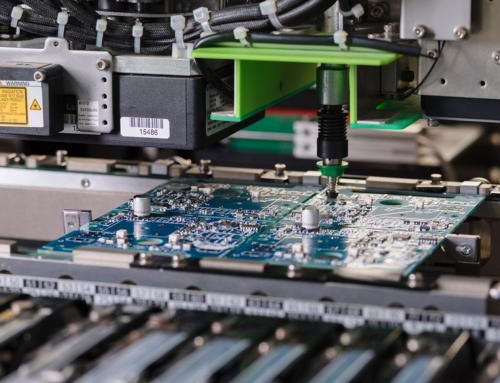The global market for printed circuit boards (PCBs) is growing rapidly. The projected CAGR of 5.2% will bring it to an estimated US $90.1 billion by 2030. The size of this market is only dwarfed by the industries it serves. PCBs are found in almost every finished product that drives modern society, and are responsible for the proper functioning of everything from industrial automation to aerospace.
Closer to home, you’ll find PCBs in medical devices that treat illness and injuries within medical devices or in consumer products of all types. One critical, logical step verifies the functionality of these essential products before PCB and PCBA assembly and production—prototyping. Prototyping tests and verifies a design concept’s functionality or a build’s documentation. None of these smart devices are worth anything if the PCB within doesn’t function properly.
The process of prototyping PCBA boards is a critical step in product development, helping to iron out design issues and protect the proof of concept. While the specific steps may vary from one contract manufacturer (CM) to another, it is important for customers to understand the significance of the prototyping process for a successful outcome.
PCB prototyping for new product introductions
When creating a new product, the prototyping process is often characterized by its iterative nature. Multiple prototype runs may be necessary as the product moves through the development process. The emphasis on prototyping for a new product is focused on design verification as the main priority, but it is also conducted to verify that the product can be manufactured within the price point the customer has targeted.
The key steps for PCB prototyping for NPI include:
- Documentation: Any first step in a prototyping process involves reviewing and validating supplied documentation. The documentation must correlate with and accurately represent the intended design.
- Iterative prototyping: A new product may involve multiple prototype iterations. Depending on the complexity of the design, the prototype run could involve five, ten, or even 25 boards. Typically, the initial run will be smaller to conserve materials. As the design is modified after each prototype run, another is conducted as the product is refined.
- Build for manufacturing: Production feedback is supplied during prototyping to determine whether the project is scalable. This helps to guide any modifications needed to ensure the product can be effectively manufactured in large quantities.
PCB prototyping for contract manufacturing transfer
When a project is transferred from one CM to another, the primary initial focus is a review of existing documentation. The prototyping process is conducted to verify this documentation, identify any missing steps or processes not included in the documentation, and certify that all the parts included in the build are available and suitable for production.
Some CMs might practice proprietary manufacturing techniques or processes and may not fully disclose some steps in the documentation. More often, information and undocumented practices have evolved over time to address specific production challenges.
The key steps for prototyping with a project transfer include:
- Document verification: The initial step includes reviewing and verifying the existing documentation provided by the previous CM. This review process helps identify discrepancies or missing information that could impact board production.
- Bill of Materials (BOM) analysis: This involves a comprehensive examination of the components and materials required to manufacture the board, yielding a detailed list of all the parts, quantities and specifications needed for production. This is a good opportunity to discover any parts reaching end-of-life or obsolescence as part of Design for Manufacturing.
- First Article Build (FAB): A first article build is conducted to validate the existing design. This step helps confirm the product can be successfully manufactured at the new CM and identifies any issues needing addressing. Customers will sign off after a First Article Inspection (FAI) prior to a production run.
- Testing and qualification: To minimize failures, no products are shipped before testing. The CM will typically perform In-Circuit Testing (ICT), while Function Testing (FCT) can be performed by either the CM or the customer.
While the fundamental concept of prototyping applies to both NPI and CM transfer scenarios, the process can differ significantly. A tailored approach is essential to meet each situation’s unique challenges and objectives. In the end, a successful prototyping process concludes in a product that is producible at scale and within budget.
The benefits of a dedicated line to create PCB prototypes
Among the many reasons customers choose CO-AX Technology, Inc. above the competition is due to our dedicated SMT line for prototyping. This offers several advantages to customers, including:
- Faster Development: A dedicated prototyping line allows engineers and designers to iterate designs more rapidly. The team can quickly test new designs, materials and processes without waiting for a gap in the regular production schedule. Typical turnaround is two weeks from the date the last part is received.
- Specific Resource Allocation: Process engineers create the work instructions for each build. The dedicated line then enables CO-AX to assemble the prototypes without drawing from regular production.
- Reduced Development Costs: Prototyping on a dedicated line can help customers identify and rectify design or manufacturing issues early in the process. CO-Ax’s Design for Manufacturing process identifies quality and cost optimization.
- Transparent Communication: A dedicated prototype line also improves communication channels with our customers, with any documentation and parts issues proactively communicated. Customers can closely monitor the progress of their prototypes while receiving regular updates and feedback throughout the development process.
The dedicated prototyping line at CO-AX benefits clients by accelerating product development, enhancing product quality, reducing risks and fostering collaboration between the customer and the engineering team. Ultimately, it contributes to a smoother and quicker path to production to bring a product to market.
Our meticulous attention to detail and commitment to quality help ensure that your products are validated and properly fabricated from prototypes through production. Whether in the final stages of new product development or transferring a project from another CM, CO-AX is a reliable partner to transform prototypes into a successful reality. Call us today.




